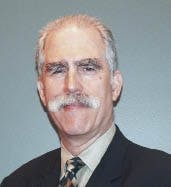Before we can address what is unique about laboratory leadership, we must first consider key attributes of leadership that transcend specific fields or departments: having a clear vision, being self-aware, and managing effectively.
Managers get things done, but leaders define what needs to be done. They start with clarity about “true north,” the unchanging and absolute reference point by which a leader makes judgments. In all aspects of healthcare, this should be the welfare of the patient. It’s not the payer; it’s not the hospital; it’s not the government. It doesn’t change if you’re an administrator, a physician, a nurse, or a laboratory professional. With true north in sight, leaders establish a clear vision of what their organization can and should become. Their vision arises from the value needed by the larger enterprise of which their organization is a part, but the direction is always true north.
Just as important, leaders communicate their vision in a way that resonates with employees so that they adopt that vision as their own. When an organization acts with a common vision, it’s an indication of good leadership. Maintaining alignment requires more than merely articulating the vision; leaders have to demonstrate their commitment to it through their actions and decision-making. This means considering decisions for their impact on organizational alignment as well as other operational considerations. This added perspective requires careful reflection by the leader and encouragement of diverse points of view from the organization. It means seeking disconfirmation of decisions as much as expecting confirmation. It means building consensus, not demanding obedience.
The second most important attribute is self-awareness. In my experience, the most common reason why individuals fail as leaders is their own blind spots. People don’t want to follow leaders who have hidden agendas, or who put their ego or personal needs ahead of the organization. Yet many unsuccessful leaders do just that without realizing it. Self-aware leaders recognize when their own behavior is sabotaging the vision that they have established, but it is no easy task. One has to understand one’s own biases. For example, when employees say something that conflicts with a stated direction, a bad leader tends to assume the worst of intentions, while a good leader considers the possibility that there is a simple misunderstanding or valid differences in assumptions. Author and educator Stephen Covey (The Seven Habits of Highly Effective People) says, “Seek first to understand and then to be understood.” A good leader is a good listener.
However, limiting biases and being a good listener are not enough. Leaders must also understand that the perceptions of others drive their behaviors and ultimately their trust in the leader. Inevitably there will be times when leaders’ actions will conflict with the vision and some of their innermost feelings will conflict with their outward statements. Employees recognize these conflicts, and this undermines trust. Self-awareness helps the leader recognize those conflicts as well and accept accountability for them, enabling actions that will bring back harmony with the vision.
A good leader must also be an effective manager. Effective management involves many characteristics, but a few, in particular, are worth mentioning because of their strong association with leadership. Effective managers delegate; they don’t abdicate. Employees don’t like being set up for failure or abandoned to a difficult task. They want to know that their manager will support them and share accountability without micromanaging. An effective manager also seeks to “coach, not catch.” Assuming that all employees are doing the best they can, shortfalls in performance are opportunities to counsel employees so they can learn and do better. Most people want to do well and are willing to work on improvement in a supportive environment that is grounded in assuming the best about people.
Finally, effective managers expect employees to be accountable in the same way that good leaders hold themselves accountable. Delivering on commitments is part of building trust. Ignoring performance problems helps no one, but addressing them must be done objectively and with consideration for the assumed good intent of the employee. In those situations where the employee just isn’t buying into the vision or the culture or isn’t trying to address issues, the employee needs to be helped out of the organization so that he or she can find the right place.
What’s unique about leadership in the clinical laboratory?
Certainly, the context and specific problems are different, but the principles are not. It is still necessary to define “true north” and establish a vision. The most frequent challenge facing laboratory leaders is their focus on factory-like measures, e.g., productivity and lower cost per test, which potentially can conflict, or seem to conflict, with the true north of healthcare—improved patient outcomes.
Some people lead solely by the authority that is associated with their position. Others lead with the support of those that are led. For most, it is a combination of the two. However, the enthusiastic support of those you lead is an exhilarating proposition. By defining and driving toward true north; by setting an aspirational vision that resonates with employees; by avoiding the landmines that are common with individuals who are not self-aware; and by providing effective management, you can meet the goal of being a successful clinical laboratory leader.
About the Author






